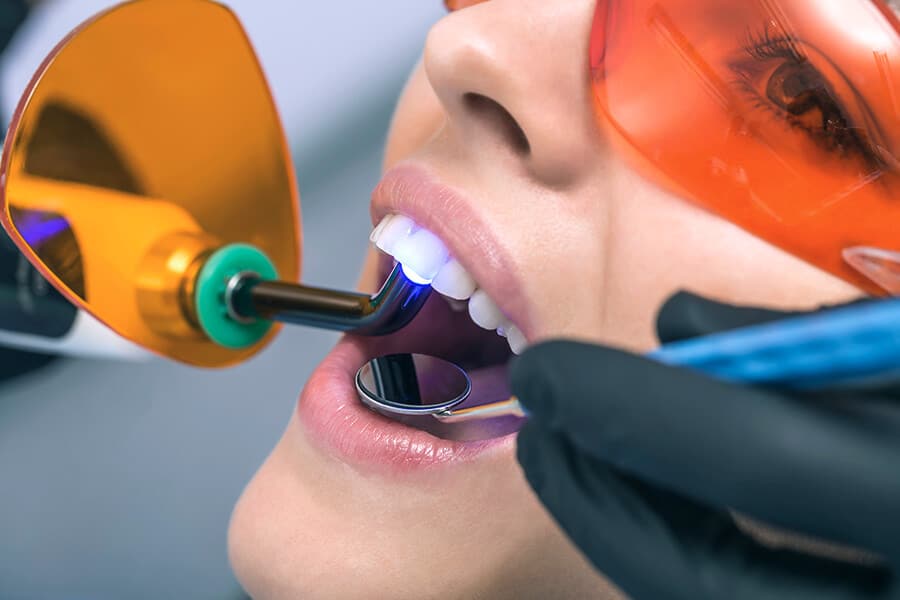If you don’t have the smile you have always dreamed of, perhaps you have considered utilizing lumineers. There are many reasons to choose lumineers but with so many other dental options available: crowns, cosmetic whitening kits, bonding, dental implants and more; how can you tell if lumineers are the best choice for you?
What are Lumineers?
Lumineers are a specific type of porcelain dental veneer. Veneers are thin shells that go over the teeth. The tooth will have to be smoothed down in order to take the veneer and not make the total width of the tooth and veneer uncomfortable for the wearer. Lumineers are a specific type of veneer that are thinner than a standard veneer. While a typical veneer may measure .5 millimeters thick, lumineers run approximately .3 millimeters.
Pros of Lumineers
Lumineers are a great option to help a patient repair his or her smile. They allow the patient to keep the original tooth and enhance his or her appearance. They can be used to help improve misshapen or discolored teeth. They can also help correct the appearance of chipped or damaged teeth and eliminate space and gaps between the teeth. Furthermore, lumineers are resistant to staining so once they are in place you should be able to maintain a whiter smile. Lumineers can also help you achieve a mouth full of seemingly straight teeth without having to endure braces. By placing veneers over your teeth, you can give the illusion of a straight, white smile. In addition, because of the thinness of lumineers, they may be easier for your dentist to place on the tooth and be less uncomfortable to the patient. Lumineers are a great way to improve the appearance of your teeth while maintaining the appearance of a natural tooth. Other people will not be able to tell that you are wearing lumineers. This dental tool can help any number of dental issues and might be the solution you are looking for.
Cons of Lumineers
With that being said, there are possible issues that should be considered prior to moving forward.
Lumineers are considered cosmetic.
Lumineers are considered a purely cosmetic dental tool. As such, they will not be treated as medically necessary. If you are comfortable with the appearance of your teeth, as they are, lumineers may not be needed.
The cost can be high.
Lumineers are more expensive than traditional veneers and most likely are not covered by your insurance company. Because they are considered cosmetic, dental insurance will generally cover very little, if any, of the expense. One lumineer can range between $800 and $2000 per lumineer. If you need to utilize multiple lumineers the cost can become exorbitant.
It’s a process.
Getting lumineers is usually done in a three-step process. You will need an initial consultation with a dentist to assess your teeth and determine how many lumineers you need. This will be a collaborative process between yourself and your dental team. You will need to be very specific as to what you are hoping to achieve so that your dentist can guide you to the best possible results. This is also when your dentist may take X-rays and closely examine your teeth to determine their health and identify any possible issues that need to be addressed.
The second visit with your dental team will be used to prepare the teeth receiving lumineers and to take models of the teeth. The teeth will need to be smoothed down by trimming approximately a half a millimeter of enamel. This will allow the lumineer to be placed without dramatically increasing the thickness of the tooth. If needed, your dentist may apply temporary veneers at this visit. The information collected will be used to create your custom lumineers. This can take anywhere from two to four weeks.
Your third visit will include actually applying your new lumineers and ensuring that the coloring and size works for you. Your dentist will temporarily place your lumineers to make sure they are perfect before permanently bonding them to your teeth. The lumineer can be adjusted and trimmed as many times as needed. Once you and your dentist agree that you have achieved the right size and fit, the tooth will be cleaned and etched. A rough surface will allow a strong bond between the tooth and lumineer. A special cement and light are used to attach the lumineer to the tooth. Your dentist will then check to make sure you are comfortable; the bite is just right and remove any excess cement as needed.
Lumineers are thin.
While the thin nature of the lumineers can be beneficial, there is also a downside. Because of the extra thin build of lumineers it may not be possible for them to hide dark discolorations on the teeth. In addition, if the lumineer is not seamlessly blended to the gums, the change in thickness can cause inflammation of the gums. Your dental professional should be experienced in the application and care of lumineers to avoid these types of issues.
With so many options available, your best course of action is to consult a dentist you trust. You should express your ideal goals regarding the health and appearance of your teeth and gums. Your dentist will be able to explain all of your options as well as the benefits and drawbacks to each. Together, you can create the smile of your dreams.

